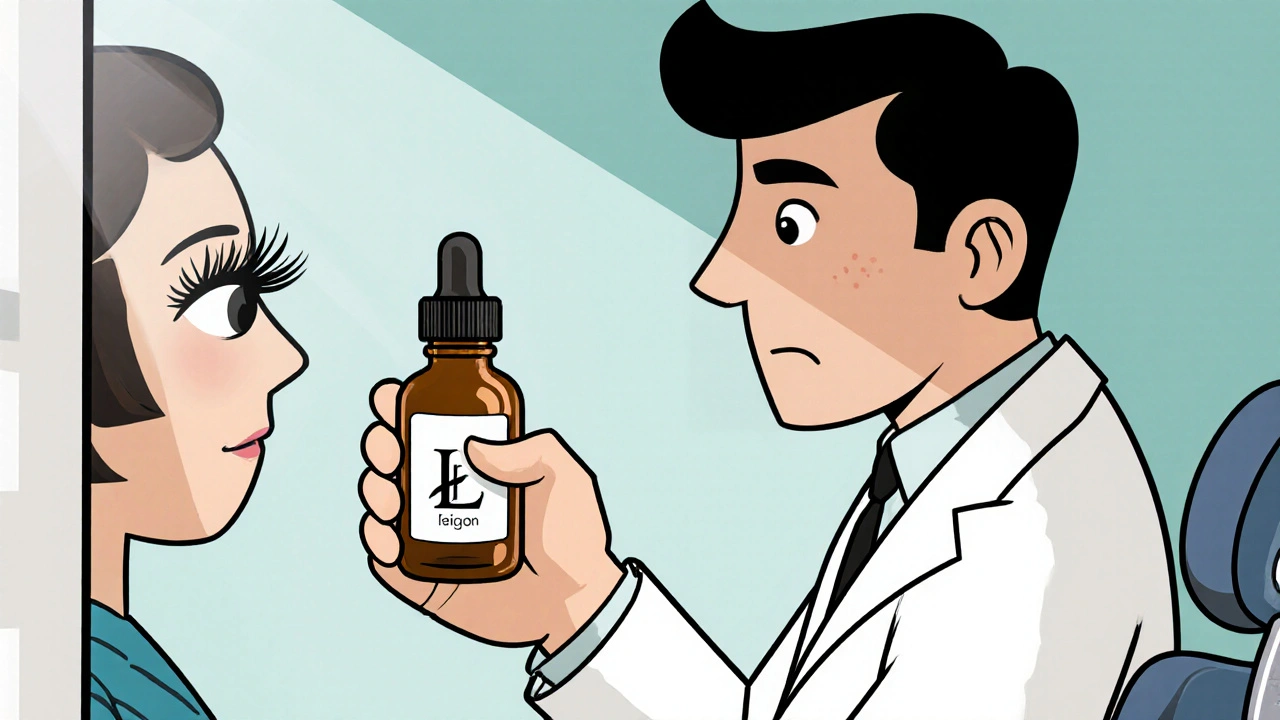
Bimatoprost’s Cultural Impact: How a Glaucoma Drug Redefined Beauty Standards
Explore how the glaucoma drug Bimatoprost reshaped beauty standards, influencing eyelash trends, the cosmetics market, and cultural perceptions of beauty.
When it comes to eyelash growth, the natural lengthening and thickening of eyelashes through biological or medical means. Also known as lash enhancement, it’s not just about looks—it’s about confidence, symmetry, and sometimes medical recovery after trauma or chemotherapy. Most people think brushing lashes or applying castor oil will make them longer. But science says otherwise. Real, measurable eyelash growth requires targeting the hair follicle’s growth phase, and only a few compounds do that reliably.
The only FDA-approved drug for eyelash growth is bimatoprost, a prostaglandin analog originally developed to treat glaucoma but later found to stimulate lash growth as a side effect. Also called Latisse, it works by extending the anagen (growth) phase of the lash cycle. You’ll start seeing results in 4 to 8 weeks, with full effects around 16 weeks. It’s not magic—it’s biology. And it’s not for everyone. People with eye conditions, allergies, or dark irises should talk to a doctor first, because it can cause permanent iris darkening or eyelid skin changes.
Other prostaglandin analogs like latanoprost, a glaucoma medication with similar lash-growing properties. Also known as Xalatan, it’s sometimes used off-label for eyelash growth, especially in places where bimatoprost isn’t available or too expensive. But it’s not FDA-approved for this use, and results vary. Over-the-counter serums? Most are just fancy moisturizers. Some contain peptides or biotin, which might improve strength, but they won’t make lashes grow longer unless they contain actual prostaglandin analogs.
What about natural methods? Castor oil, coconut oil, vitamin E—these won’t trigger new growth. But they can help prevent breakage, which makes lashes look fuller over time. The real difference between a thin lash and a thick one? It’s about retention. If you’re rubbing your eyes, using waterproof mascara every day, or pulling off false lashes, you’re losing lashes faster than they grow. That’s why some people think their lashes are thinning—they’re not, they’re just breaking off.
If you’re considering a prescription for eyelash growth, know this: consistency matters. Miss a day or two, and you might lose progress. Stop completely, and your lashes will return to their original state in a few months. It’s not a one-time fix—it’s maintenance. And while some people get dramatic results, others see only subtle changes. That’s normal. Genetics, age, and health all play a role.
Below, you’ll find real-world comparisons of treatments people actually use—from the science-backed to the overhyped. No fluff. Just what works, what doesn’t, and what to watch out for when your lashes are on the line.

Explore how the glaucoma drug Bimatoprost reshaped beauty standards, influencing eyelash trends, the cosmetics market, and cultural perceptions of beauty.